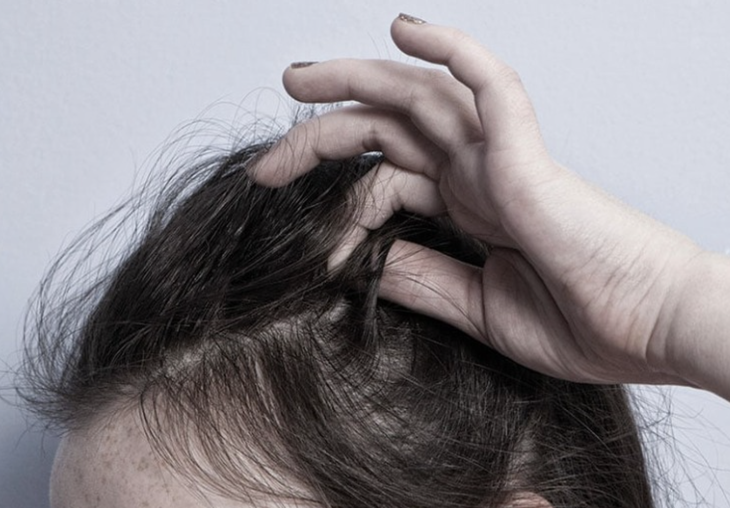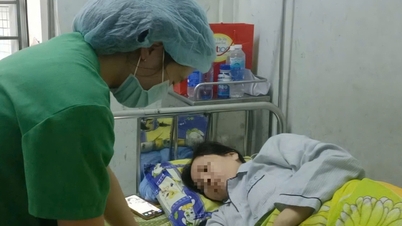
Repetitive, uncontrolled hair pulling behavior can be a sign of mental illness - Illustration photo
Sharing about this issue, Dr. Bui Van Loi - expert of the Institute of Mental Health, Bach Mai Hospital - said that pathological hair pulling (Trichotillomania - TTM) is a disorder belonging to the spectrum of obsessive-compulsive disorders and related disorders.
What is pathological hair pulling?
Doctor Loi said the disease is characterized by repetitive, uncontrollable hair pulling behavior, leading to hair loss, baldness and seriously affecting aesthetics.
People often experience tension and frustration before hair pulling and feel temporary relief afterward. However, this relief is quickly replaced by feelings of guilt, shame or anxiety, causing them to fall deeper into the cycle.
The characteristic signs are patches of uneven hair loss, alternating short and long hair, smooth scalp but no scars. The patient may look in the mirror, pick out specific hairs to pull out, and even eat hair.
The disease usually begins in adolescence (around 12-13 years of age). The lifetime prevalence is estimated at 0.6% - 3.6% of the population, and is more common in women than in men.
The cause is related to brain dysfunction, especially the imbalance of neurotransmitters such as Serotonin, Dopamine, Glutamate - affecting the ability to control impulses.
Some studies have also shown abnormalities in brain regions such as the cerebellum, putamen, and cortico-striatal-thalamic circuit. Psychologically, hair pulling is often a response to relieve stress, anxiety, or negative emotions.
Complete prevention is difficult, but if early signs of stress and behavioral disorders are recognized and psychological support is provided, patients can be treated effectively and serious progression can be prevented.
According to Dr. Loi, people with suspicious signs should see a psychiatrist. Because the initial symptom is hair loss, many patients often go to a dermatologist.
In this case, coordination between two specialties, psychiatrist and dermatologist, is very important to determine the exact cause.
"If left untreated, hair pulling behavior will become chronic, the patient will increasingly lose control and become dependent on this behavior.
Common complications include scalp infections, permanent hair loss, and psychological disturbances such as depression, low self-esteem, and social isolation.
In particular, when patients have the habit of eating hair, hair can accumulate in the stomach, forming a large hairball, causing intestinal obstruction, even requiring emergency surgery," Dr. Loi warned.
Who is at high risk for this disease?
Doctor Loi said the disease is common in children and adolescents, especially women, with a rate 4-9 times higher than in men.
People with a history of anxiety disorders, depression, obsessive-compulsive disorder or attention deficit hyperactivity disorder (ADHD) are more susceptible. In addition, academic stress, family conflicts, and psychological trauma are also important risk factors.
Treatment requires a combination of psychology and medicine. Cognitive behavioral therapy (CBT) and Habit reversal training (HRT) are the leading effective methods, helping patients identify - control - change hair pulling behavior.
Some neurotransmitter modulating drugs such as N-acetylcysteine (NAC) or Memantine have also been shown to be effective.
In addition, other psychological therapies such as acceptance and commitment therapy (ACT) and dialectical behavior therapy (DBT) help people manage their emotions better.
Transcranial magnetic stimulation (TMS) - a non-invasive brain modulation technique - is being studied with promising results.
Recently, electronic wearable devices that detect and warn of hair pulling behavior are also considered useful support tools. When there is scalp damage, patients need to be treated with dermatology in parallel with mental health.
Source: https://tuoitre.vn/thoi-quen-thich-nho-toc-co-the-la-benh-ly-tam-than-20251117134932212.htm





































![[Photo] General Secretary To Lam and National Assembly Chairman Tran Thanh Man attend the 80th Anniversary of the Traditional Day of the Vietnamese Inspection Sector](https://vphoto.vietnam.vn/thumb/1200x675/vietnam/resource/IMAGE/2025/11/17/1763356362984_a2-bnd-7940-3561-jpg.webp)



































































Comment (0)